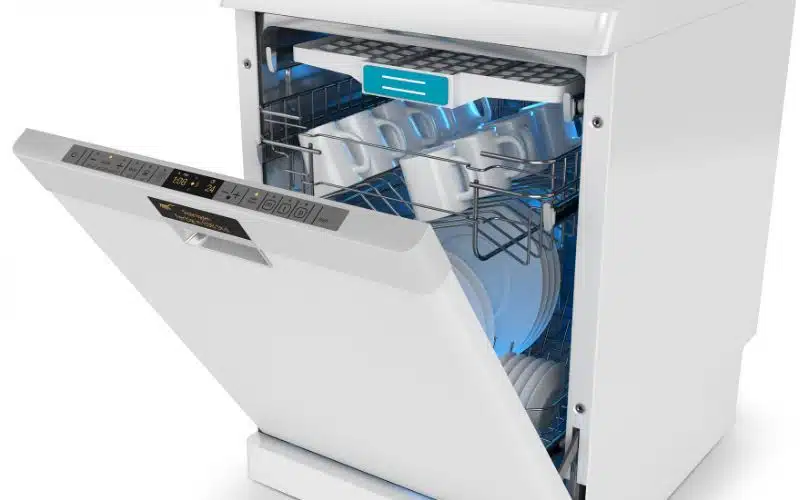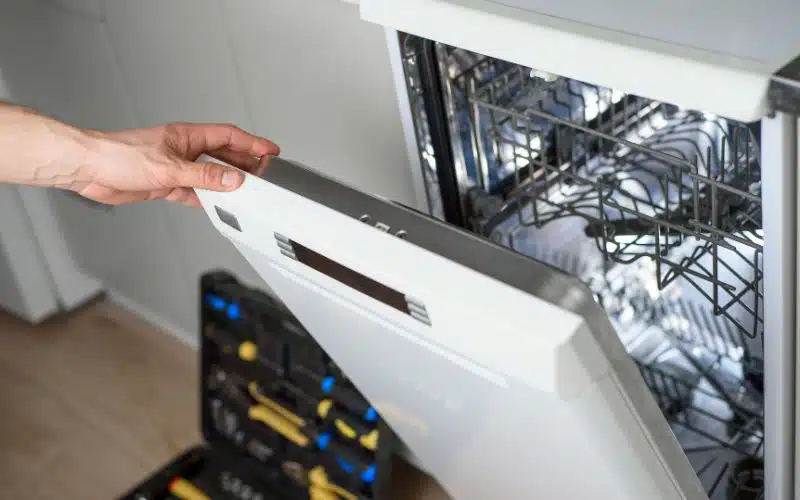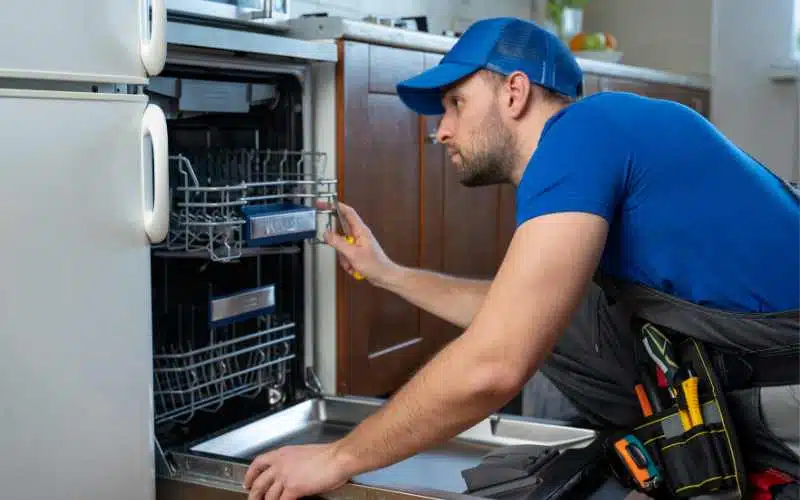When the power goes out, it’s not just the lights that stop working. Sometimes, your dishwasher stops too, even when the power comes back!
Why does this happen? Let’s find out how to fix it and get those dishes clean again.
Key Takeaways
- Power Surges Damage Dishwashers: Sudden increases in voltage, like those during power surges, can harm the sensitive microprocessors in your dishwasher, leading to immediate or gradual damage.
- Protect Your Appliance: Unplugging your dishwasher when not in use, using surge protectors, and ensuring good wiring can safeguard against damage from power surges.
- Resetting After Outage: If your dishwasher malfunctions post-outage, check for a blown fuse, malfunctioning door latch, faulty control panel, motor/pump issues, thermostat faults, or activation of child lock, sleep mode, or control lock.
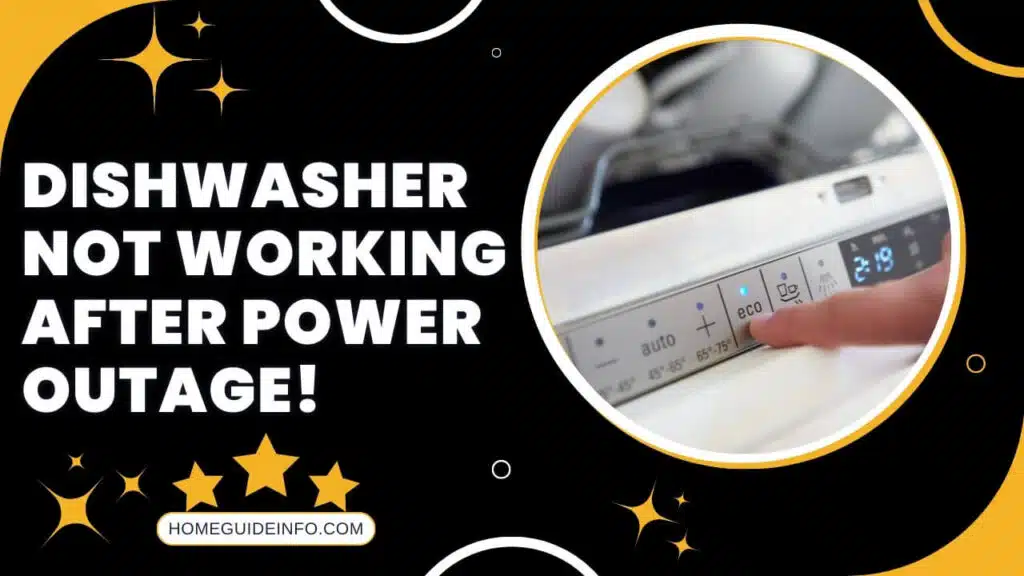
Can A Power Outage Damage A Dishwasher?
When your dishwasher stops during a power outage, it’s not the lack of power that hurts it. It’s what happens when the lights come back on.
Your dishwasher has a brain called a microprocessor that tells it how to clean your dishes.
Microprocessors are smart but very sensitive. They don’t like it when electricity suddenly jumps or drops.
How these surges affect your dishwasher:
- Power Surges: Sudden increases in voltage that can damage the dishwasher’s circuitry.
- Electronic Rust: Even small surges can wear out the dishwasher over time like rust on a bike chain.
What happens to the dishwasher parts?
| Problem Caused by Surge | Part Affected |
|---|---|
| Short-term Damage | Fries circuit boards |
| Long-term Damage | Slow degradation, electronic “rust” |
Remember, devices like your dishwasher are built to make life easier, but they need steady power, not wild jumps, to work right.
If you ever face a situation where your dishwasher isn’t acting normally after the power comes back, it could be due to these sneaky surges.
Causes of Power Surges
#1. Lightning
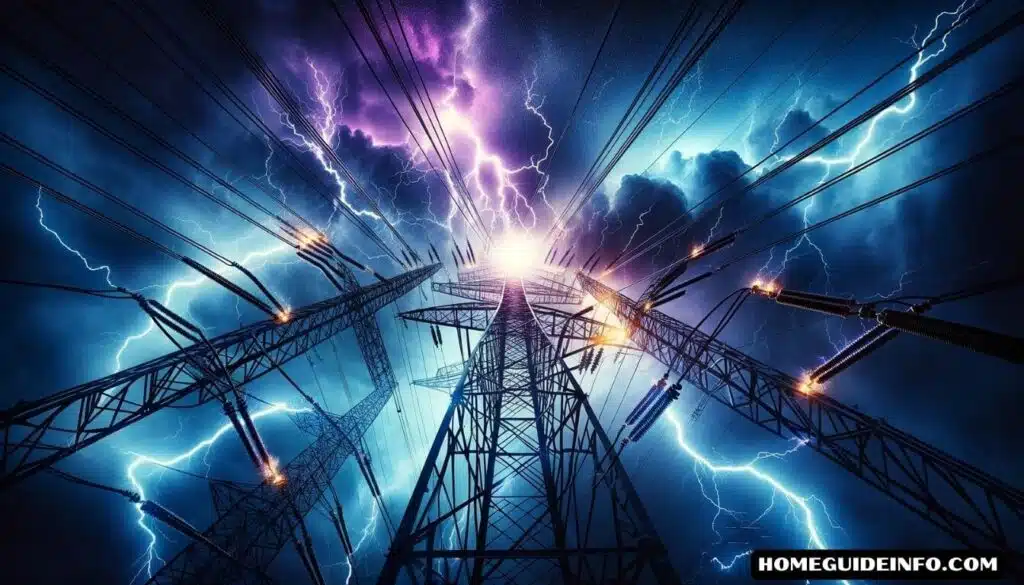
You might see lightning during big storms. This electricity can strike your power lines and send a sudden, strong boost of electricity into your home.
This unexpected increase can be too much for your electrical system, leading to a power surge.
#2. Overloading
When you plug too many devices into an extension cord, it can create too much pressure on the circuit. This pressure builds up and might cause a surge. It’s like trying to push too much water through a small hose.
#3. Bad Wiring
Old or damaged wiring is a risk for causing surges. If you have bare wires or they’re not installed right, that energy has nowhere safe to go. This can lead to a sudden spike in electricity through your home’s system.
#4. Power Grid Failure
When the community power grid has problems and then gets fixed, it can send a big wave of electricity through the system. This sudden rush can cause a surge in your home’s electrical setup.
What Happens To A Dishwasher When Power Goes Out?

#1. Unplugging Dishwashers When They’re Not In Use
If you disconnect your dishwasher from the power supply after you’re finished with it, it won’t suffer from sudden surges.
When a power outage happens, there’s nothing to worry about for your dishwasher since it’s not linked to any electrical current.
Your appliance stays safe from unexpected electrical component malfunctions.
#2. The Use Of Surge Protectors Or Installing A Home Surge Protector
Surge protectors are essential for safeguarding your dishwasher against electrical surges.
You can opt for a portable wall tap adapter, which acts as a surge protector specifically for your dishwasher, or invest in a home surge protector that protects the whole wiring system.
Here’s a look at how surge protectors can be helpful:
- Model: Belkin Single Outlet SurgeCube Protector
- Usage: Defends against surges
- Placement: Directly on the outlet or within the electrical box as a home surge protector
- The Belkin Difference: Pioneer in technology and…
- Surge Protector Single Power Outlet: The compact…
- Portable Travel Wall Mount Outlet: The small and…
- Durable and Safe: Convenient and safe charging hub…
Last update on 2024-01-10 / Affiliate links / Images from Amazon Product Advertising API
#3. Have A Technician Assess Your Home’s Wiring
Older wiring systems can be prone to wear and tear which might cause power surges.
It’s a smart move to let a professional technician examine your home’s electrical components.
They can spot and resolve potential hazards, ensuring the safety and functionality of your household appliances.
#4. Be Careful of Post-Outage Surges
After a power outage, the power supply may come back with a surge, and that spike in voltage can damage appliances.
To avoid harm to your dishwasher, you should unplug it right after an outage. This prevents any post-outage surges from causing problems with your dishwasher’s microprocessor or power cord.
How Do I Reset My Dishwasher After A Power Outage?
#1. A Blown Fuse
Check if the power indicator is off, this suggests a possible blown fuse or tripped breaker. Replacing a fuse or resetting the breaker can restore power to your dishwasher.
#2. Malfunctioning Door Latch
Ensure the door latch is locked correctly, as your dishwasher will not run otherwise. If the microswitch inside is impaired, it prevents the unit from functioning due to safety concerns. You may need to replace this component to resolve the issue.
#3. Faulty Control Panel
The control panel oversees all dishwasher operations. Irregularities such as halted cycles or inconsistent indicator lights despite power may indicate control panel issues.
Refer to your user manual for troubleshooting steps or consider professional repair or replacement.
#4. Faulty Motor/Pump
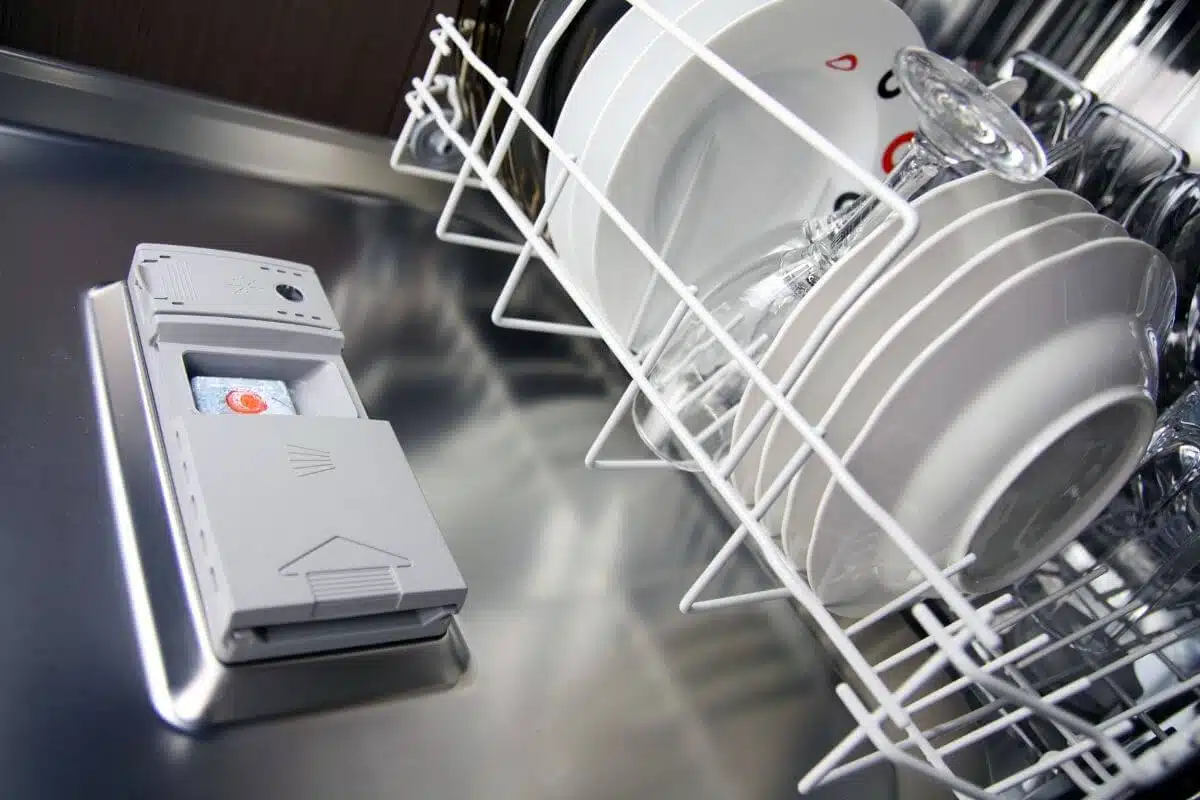
#5. A Fault With The Thermostat
A thermostat issue may halt your dishwasher mid-cycle, especially during drying. If dishes are not being washed or dried correctly, the thermostat may be at fault and require inspection or replacement.
#6. Activated Child Lock
Some models feature a child lock that, when activated, disables all buttons. To deactivate, press the designated lock button for three seconds or the power button likewise.
#7. Activated Sleep Mode
If your dishwasher is equipped with sleep mode and this function is active, the machine will not run. Hold the start button down for around a minute or until the sleep indicator extinguishes to exit sleep mode.
#8. Activated Delayed Mode Or Control Lock
Ensure the dishwasher is not set to delayed start or control lock. To resume from delay mode, hold the cancel/drain button and press start. For the control lock, press and hold the designated lock button until it disengages.

